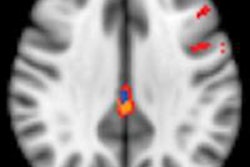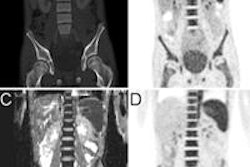Dear MRI Insider,
This edition of the Insider offers a look into the future with a promising new MR technique that could shed light on the characteristics of stroke and possibly neurodegenerative diseases.
A collaborative team from the National High Magnetic Field Laboratory at Florida State University (FSU), the Champalimaud Center in Portugal, and the Weizmann Institute of Science in Israel has developed an MR spectroscopy (MRS) sequence that targets specific metabolites in certain regions of the brain to determine their concentration and how they could affect a stroke.
The key piece of technology is FSU's preclinical 21.1-tesla MR magnet, which can visualize chemical signatures of metabolites in 125-microliter volumes. The challenge now is to adapt the ultrahigh-field MRS technique to lower magnet strengths in the clinical setting. Learn more in our Insider Exclusive, which is available to you first as an Insider subscriber.
In other top features, teenage baseball players beware: Throwing more than 100 pitches per week could lead to abnormal shoulder development and potential long-term issues, such as rotator cuff tears, in both males and females. Researchers at Thomas Jefferson University used MRI to detect fusion issues and swelling at the acromion, located at the top of the shoulder.
In other developments, Swiss researchers using arterial spin-labeled (ASL) MRI found signs of cognitive decline in the brains of healthy elderly individuals before symptoms appeared. Initial ASL-MRI scans showed decreased cerebral blood flow in the posterior cingulate cortex region of the brain in approximately half of the healthy subjects in the study, who later developed subtle cognitive decline.
Elsewhere, German researchers have found promising evidence that PET/MRI is equivalent to PET/CT for detecting lesions in pediatric cancer patients, while at the same time delivering just one-quarter of the radiation dose. Separately, MRI provided substantial additional clinical information, especially in soft-tissue lesions that were deemed negative with PET.
Finally, a global team of MRI researchers concluded that in the appropriate clinical setting, cerebral fat embolism can be differentiated from diffuse axonal injury. Read about which MRI techniques they tried by clicking here.
Be sure to stay in touch with the MRI Community on a daily basis for the latest news and novel research from around the world.



.fFmgij6Hin.png?auto=compress%2Cformat&fit=crop&h=100&q=70&w=100)




.fFmgij6Hin.png?auto=compress%2Cformat&fit=crop&h=167&q=70&w=250)











